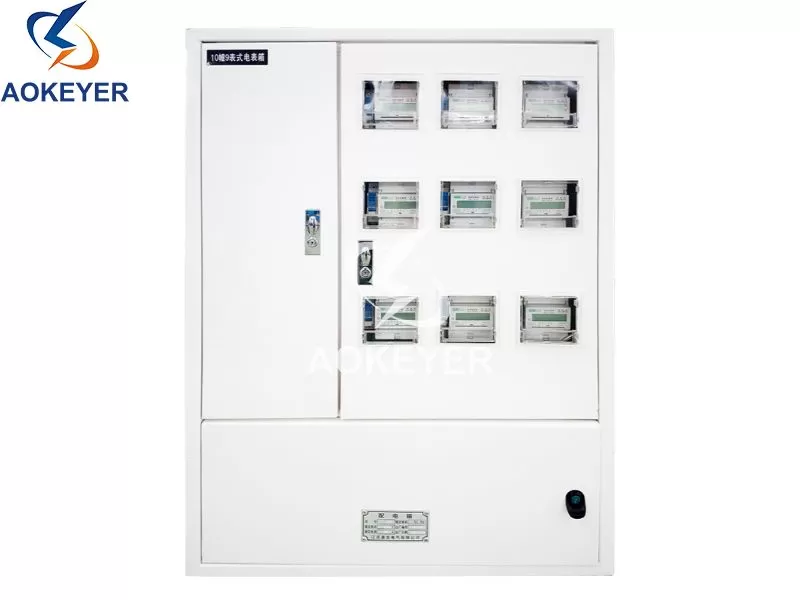A Beginner’s Guide to Low-Voltage Switchgear: Basics and Applications
Aug. 08, 2025
Low-voltage switchgear plays a vital role in electrical systems, delivering essential functions for both safety and operational control. A solid understanding of its fundamentals is essential for professionals involved in electrical engineering or maintenance.
This guide offers newcomers a concise introduction to the key concepts, components, functions, and applications of low-voltage switchgear, serving as a foundation for deeper exploration.
What Is Low-Voltage Switchgear?
Low-voltage switchgear (LV) is a three-phase power distribution unit designed to deliver electrical power at voltages up to 1,000 volts and currents up to 6,000 amps. Typically installed indoors, LV switchgear is housed in a metal enclosure containing copper conductors along with a combination of circuit breakers and isolators to ensure safe and efficient power management.
Electrical Switchgear Types
Switchgear systems are generally classified into three main categories: low-voltage, medium-voltage, and high-voltage.
High-Voltage Switchgear (HV): Designed for systems operating at 75 kV or higher, HV switchgear includes advanced safety features to manage the hazards associated with high-voltage applications.
Medium-Voltage Switchgear (MV): Used in systems ranging from 1 kV to 75 kV, MV switchgear is commonly employed with motors, feeder circuits, generators, and transmission or distribution networks.
Low-Voltage Switchgear (LV): Intended for systems up to 1 kV, LV switchgear is typically positioned on the low-voltage side of power distribution transformers and is widely used across various industrial sectors.
Main Components of Low-Voltage Switchgear
Low-voltage switchgear, typically rated up to 1 kV, incorporates a variety of devices designed to control, protect, and isolate electrical systems. Common components include low-voltage switches, earth leakage circuit breakers, HRC fuses, electrical isolators, air circuit breakers (ACB), moulded case circuit breakers (MCCB), and miniature circuit breakers (MCB).
Breaker Compartment: Houses devices that automatically interrupt electrical flow in the event of an overload or short circuit. Common examples include MCBs and MCCBs.
Switches: Mechanical devices used to open and close electrical circuits, either manually or through automated control.
Bus Compartment: Located behind the circuit breaker compartment and separated by solid barriers, it contains the busbars that distribute power within the switchgear.
HRC Fuses: High-rupturing capacity fuses that melt and break the circuit when current exceeds a predetermined threshold. Variants include cartridge fuses and plug fuses.
Enclosures: Protective casings that contain all switchgear components, ensuring operational safety and compliance with standards such as IP ratings for dust and water ingress protection.
Cable Compartment: Positioned behind the main switchgear section and separated from the bus compartment using vented or unvented barriers, it accommodates the incoming and outgoing power cables.
Other Accessories: Additional protective and monitoring devices as required to maintain safe and efficient system operation.
Applications of Low-Voltage Switchgear
Low-voltage switchgear is used across a wide range of industries and facilities where reliable power distribution and protection are essential, including:
Power stations
Transformer stations
Automotive industry
Related links:
Rethinking Power Track Systems for Modern SpacesInfrastructure projects
Machine construction
Chemical and petrochemical industries
Pharmaceutical industry
Oil and gas sector
Pulp and paper industry
Cement industry
Mining industry and steel mills
Waste management facilities
Water treatment and distribution
Steel and metal processing
Glass manufacturing
Plant engineering and construction
Data centres
And many other industrial and commercial applications
Benefits of Low-Voltage Switchgear
Enhanced Safety: Protects people and equipment by preventing electrical faults and reducing the risk of accidents.
Reliability and Performance: Ensures stable and efficient operation of electrical systems, minimizing downtime and improving overall productivity.
Cost Efficiency: Reduces long-term expenses by protecting equipment from damage and lowering maintenance costs.
Low-Voltage Switchgear FAQs
What Is the Difference Between Switchgear and Switchboards?
Switchgear and switchboards can be configured in countless ways, each offering features the other may not include. As a result, it is difficult to compare their costs directly, even when they are similar in size and function. However, engineers often find that switchboards tend to be a more cost-effective option. This is largely because switchgear with divided compartments requires more material and space, which increases costs, even after factoring in additional functionality and control wiring.
Is Low-Voltage Switchgear Easy to Use?
We design and manufacture custom low-voltage switchgear to meet the exact requirements of each building or application. These units are typically installed in controlled environments such as plant rooms or switch rooms.
While some systems are straightforward to operate, others can be highly complex. We strongly recommend that anyone operating LV switchgear undergo proper training, as errors can be costly or even dangerous. Live switchgear should only be handled by competent, trained, and certified personnel, and appropriate personal protective equipment (PPE) must be worn to ensure safety during switching operations.
86
0
0
None
None



Comments
All Comments (0)